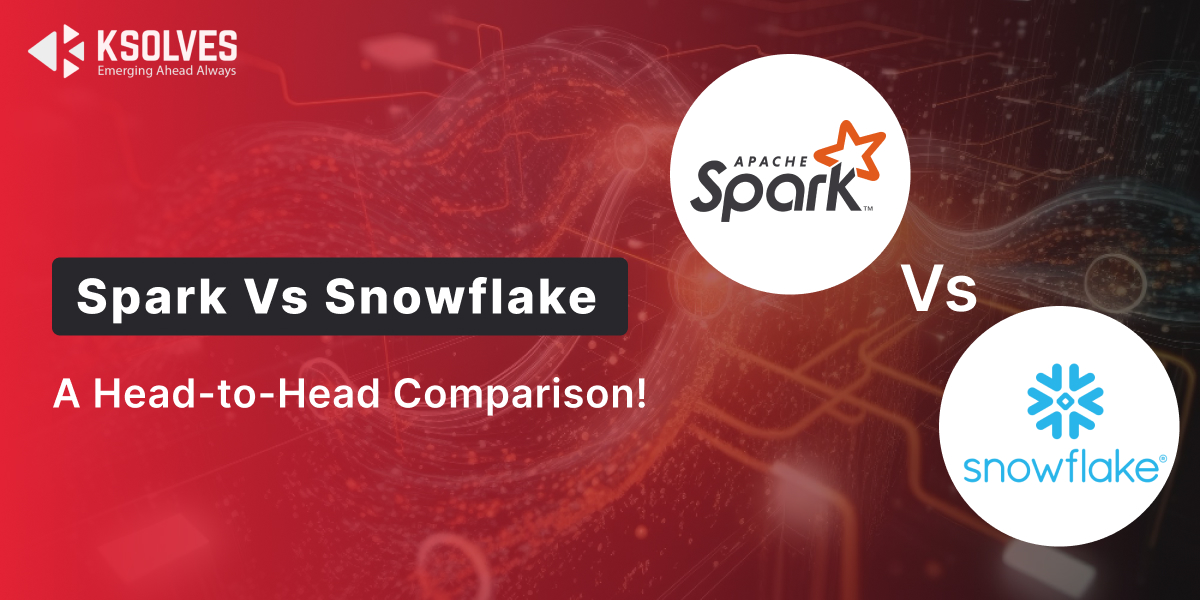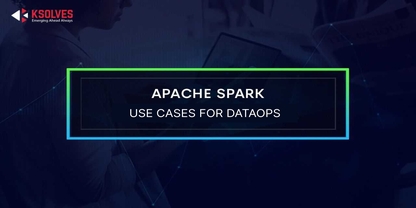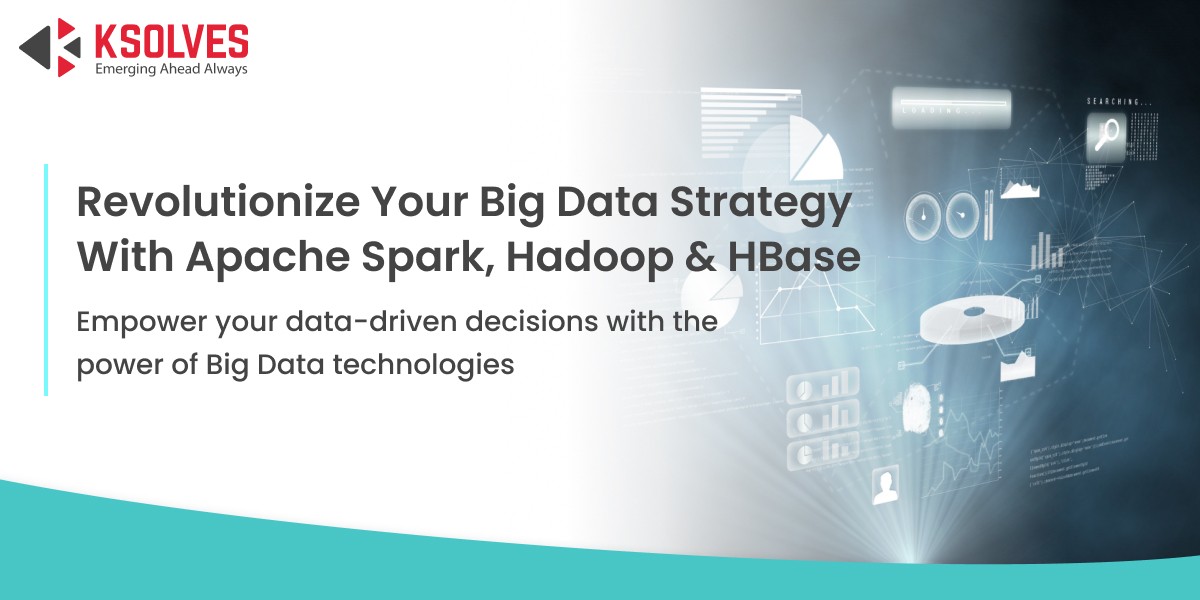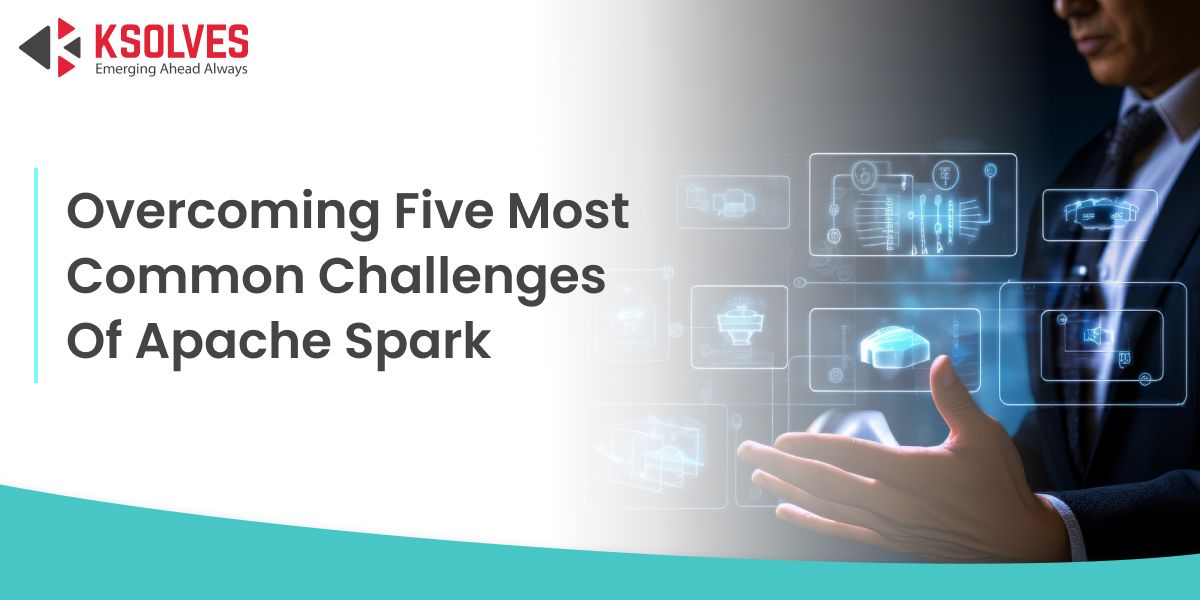Spark Vs Snowflake: A Head-to-Head Comparison!
Spark
5 MIN READ
July 8, 2024
![]()

Big Data technology has been growing in this ever-evolving world. Choosing the right big data platform for processing the data and finding its analytics is important. Two prominent contenders are emerging here, i.e., Apache Spark and Snowflake. Let’s understand briefly about them and what we cover in this blog.
Apache Spark is an integrated analytics engine that has seen rapid adoption by businesses across various sectors. It’s a lightning-fast big data and machine learning-integrated analytics engine. Snowflake, on the other hand, is just a little behind. Snowflake is a data warehousing firm that offers unified access and storage across clouds. It solidifies its position as a service that requires almost little upkeep to enable secure access to your data.
Let’s check out which of these two is the best. Let’s look closer at who is the best of these two in the battle of Spark vs. Snowflake.
What Exactly Is Apache Spark?
Apache Spark is a high-performance, in-memory data processing engine. Spark is primarily intended for data research, and its abstractions make it simpler. It also contains a universal execution graph engine that has been tuned. Apache Spark is the largest open-source project for data processing. It is highly adaptable in that it can be deployed in a variety of methods, and it also provides native bindings for the programming languages Java, Scala, Python, and R. Spark provides simple APIs for working with huge datasets. This features over 100 operators for data transformation and familiar data frame APIs for managing semi-structured data. It is the unified analytics engine that has seen significant adoption by organizations across a wide range of sectors since its debut.
Moreover, many individuals have the question: Does Apache Spark have the ability to make the right decisions for you?.
The simple answer to this question is Yes. For detailed information, move to the next section.
Apache Spark’s Key Features And Functionalities
The following are the characteristics and functionalities that make Spark one of the most widely used Big Data platforms:
- In-memory computation in Spark: Spark has a Directed Acyclic Graph execution engine that enables in-memory computation resulting in a great performance. The data is cached here so that we don’t have to retrieve it from disk every time, which saves users time.
- Faster Data Processing: By minimizing the number of read-write disc operations, Apache Spark can process data 100 times quicker in memory and 10 times faster in storage.
- Real-Time Stream Processing: Spark offers a feature for processing real-time streams. The issue with Hadoop MapReduce before was that it could only manage and analyze data that was already available, not real-time data. However, we can fix this issue using Spark Streaming.
- Highly Dynamic: Spark features 80 high-level operators, making it simple to construct a parallel application.
- Fault Tolerance in Spark: Spark abstraction-RDD enables fault tolerance in Apache Spark. Spark RDDs are built to handle the failure of any cluster worker node. As a result, it guarantees that data loss is kept to a minimum.
What Exactly Is SnowFlake?
Snowflake’s Data Cloud is based on a cutting-edge data platform that is available as Software-as-a-Service (SaaS). It provides data storage, processing, and analytic solutions that are quicker, easier to use, and more adaptable than traditional systems. Snowflake is not based on any current database technology or “big data” software platforms like Hadoop. Snowflake, on the other hand, combines a completely new SQL query engine with an innovative cloud-native architecture. It is entirely based on cloud infrastructure. Except for optional command-line clients, drivers, and connectors, all components of Snowflake’s service run in public cloud infrastructures.
Snowflake’s Key Features And Functionalities
Snowflake is a cutting-edge data architecture with a slew of novel features and functions, which are detailed below:
- Improved Analytics Quality And Speed: Snowflake helps you to enhance your Analytics Pipeline by allowing safe, concurrent, and controlled access to your Data Warehouse across the enterprise in real-time.
- Customized Data Exchange: Snowflake allows you to create your own Data Exchange, which allows you to securely exchange live, controlled data. It gives you a 360-degree perspective of your consumer, including information on critical customer characteristics such as interests, occupation, and more.
- Better Data-Driven Decision Making: Snowflake helps you to break down data silos and offer access to meaningful insights throughout the enterprise, resulting in better data-driven decision-making.
- Strong Security: You can use a secure Data Lake to store all compliance and cybersecurity data in one location. Snowflake Data Lakes ensures quick incident reaction times.
- Enhanced User Experiences: Snowflake allows you to better understand user behavior and product usage. You may also use the whole scope of data to ensure customer satisfaction, drastically increase product offers, and foster Data Science innovation.
Spark Vs. Snowflake: A Head-to-Head Comparison!
In this section, we are going to cover the Snowflake Vs Spark comparison to make us understand things in a better way.
Spark and Snowflake Differences: Terms Of Data Structure
Without requiring an ETL tool to first arrange the data before putting it into the EDW, Snowflake allows you to store and upload both semi-structured and structured files. Snowflake will automatically turn the data into its internal organized format after it has been uploaded. Snowflake does not need you to provide structure to your unstructured data before you can load and interact with it.
Spark, on the other hand, can operate with any data type in its native format. Spark data pipelines are built to handle massive volumes of information. You may also use Spark as an ETL tool to format your unstructured data so that it can be used by other tools like Snowflake. As a result, in the Spark vs Snowflake debate, Spark outperforms Snowflake in terms of Data Structure.
-
Comparing Spark and Snowflake for Performance
Spark has hash integrations, but Snowflake does not. Cost-based optimization and vectorization are implemented in both Spark and Snowflake. Spark Streaming offers a high-level abstraction known as DStream, which is a continuous flow of data. Snowflake, on the other hand, focuses on batches.
-
Spark Vs Snowflake: In Terms Of Scalability
Spark and Snowflake both have high write scalability. In terms of individual query scalability, autoscaling in Apache Spark is dependent on load, whereas Snowflake provides 1-click cluster resizing with no node size selection.
-
Spark Vs Snowflake: In Terms Of Security
Spark employs an open architecture for the secure distribution of encryption keys, granting organizations complete control over the management of their encryption keys as well as the security of their data.
Snowflake, on the other hand, encrypts all client data by default, utilizing the most recent security standards. Snowflake delivers world-class key management that is completely visible to clients. As a result, Snowflake is one of the most user-friendly and secure data solutions accessible.
-
Spark Vs Snowflake: In Terms Of Architecture
Both Spark and Snowflake provide their users with great flexibility in terms of computing and storage separation. In regards to writable storage, Spark only supports queries against Delta Lake data, whereas Snowflake only enables queries against external tables.
However, many times, one more question arises in the consumer’s mind: Which is better for data warehousing: Spark or Snowflake?
In terms of data warehousing, Snowflake reserves its place at a higher level. On the other hand, Spark offers powerful data processing and is not specially designed for warehousing work. Snowflake’s cloud-native architecture and its easy-to-use feature allow it to focus on structured data warehousing.
Read More: Feed the Data to Apache Spark Streaming
Spark Vs Snowflake: Use Cases
In the above section, we have explored the comparison between Spark and Snowflake as per the architectural differences and weaknesses. In this section, we are going to discuss some specific use cases where each platform shines.
Spark Use Case for Complex Data Workflows
- Real-Time Stream Processing: While detecting fraud, analyzing the data, or log processing, there is a need to analyze the data streams in real-time, at that time, Spark’s feature of in-memory processing is considered as an ideal choice.
- Machine Learning Workflows: When you integrate Apache Spark with ML libraries like TensorFlow and PySpark, it allows you to build, train, and deploy the other ML models directly onto the platform. This will ensure the smooth working of the ML pipeline from data preparation to model evaluation.
- Large-Scale Data Transformation: Apache Spark can handle a massive amount of datasets in various formats. Its distributed processing features enable complex data transformation, data cleansing, and aggregations efficiently.
Snowflake Rise for Data Warehousing and Analytics
- Data Warehousing and BI (Business Intelligence): The cloud-native architecture of Snowflake focuses on maintaining the structured data warehousing that makes it perfect for storing historical data, building data marts, and enabling Business Intelligence (BI) dashboards and reports.
- Data Exploration: The user-friendly interface of Snowflake and its SQL compatibility empowers the analysts to explore the data, run ad-hoc queries and generate business insights instantly.
- Data Collaboration: Snowflake works on secure data sharing among internal teams or external business partners. Its role-based access control ensures granular control over the data accessing that improves the business performance, and collaboration and maintains data security.
Comparing Spark Vs Snowflake: Which One is the Better Option For You?
If we consider both Spark and Snowflake as a hybrid approach then that will be the convenient option for you all. For instance,
- Utilize Spark for data processing and feature engineering that will clean, transform, and prepare data with its powerful data processing abilities.
- If we load the processed data into Snowflake for data warehousing and data analysis then Snowflake excels at storing and analyzing massive datasets for querying.
Spark Vs Snowflake Differences: Choose the Right Tool
Both Spark and Snowflake are considered powerful tools for managing different data-driven tasks. Only after understanding the strengths and ideal use cases, can we come to the right decision. Moreover, multiple factors can help us to choose the right platforms as mentioned:
- Data Complexity: Spark can handle diverse data formats while Snowflake works on structuring the data.
- Processing needs: Spark manages the complex data transformations while ad-hoc analytics and BI are managed by Snowflake.
- Technical Expertise: Spark needs more technical knowledge while the user-friendly interface is offered by Snowflake.
- Budget and Scalability: Apache Spark needs more infrastructure investment while Snowflake works as a pay-as-you-go model that is cost-effective for smaller deployments.
Spark Continues To Outperform Snowflake!
In comparison to Snowflake, the Spark platform is more suited to Machine Learning and Data Science workloads. You can leave your data in Apache Spark whenever you wish. Then, you can use Spark to connect to it and process information for almost any use case. Until technology behemoths like Netflix, Google, and Facebook shift from open-source to proprietary systems, you can be assured that systems built on open-source, such as Spark, will be technologically superior. This is because they are significantly more adaptable than Snowflake. Spark began as a scalable ETL tool (in-memory processing), whereas Snowflake began as an elastic cloud DB that separated storage and computing.
Spark codes may be readily put into a data pipeline, but Snowflake SQL can only be performed within the Snowflake cloud. Thus, when the aforementioned characteristics such as security, performance, and scalability are taken into account, Spark always wins the race over Snowflake. We’ve observed that several organizations have failed to flourish even after implementing Spark, and we believe this is due to insufficient Spark implementation. If you want to witness a big boost in performance and a reduction in errors across several Spark projects, go no further than Ksolves as your Apache Spark developer. Ksolves, a certified Apache Spark managed service provider with professional developers from India and the United States, is at the forefront of the industry. As the leading Apache Spark consulting and development organization, we have years of experience and expertise in managing difficult projects. Everything from flawless connection to simple modification is handled by us. Contact us right away!
![]()
AUTHOR

Spark
Atul Khanduri, a seasoned Associate Technical Head at Ksolves India Ltd., has 12+ years of expertise in Big Data, Data Engineering, and DevOps. Skilled in Java, Python, Kubernetes, and cloud platforms (AWS, Azure, GCP), he specializes in scalable data solutions and enterprise architectures.







This article misleading the people. Snowflake handles many things gracefully. In any kind of aggregations, joins, data merge, unions operations, Snowflake outperforms Spark